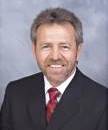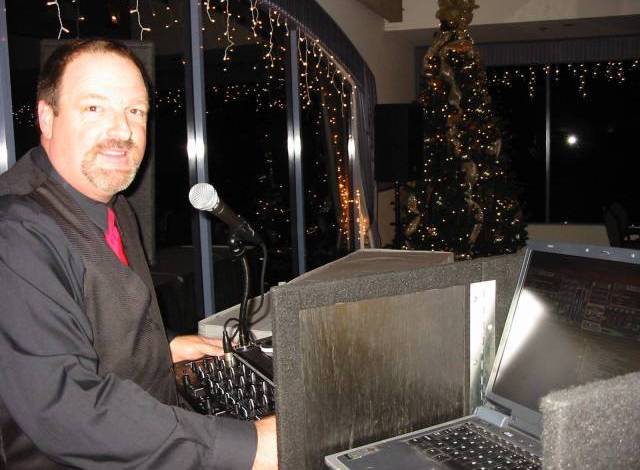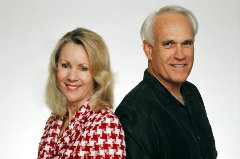






3853 Atlantic Ave.
|
Click here |
Port Pummeled In Hearing on Pier J EIR; Council Gives Both Sides Until Nov. 16 To Discuss Issues Before A Council Vote
(Sept. 14, 2004, including extended, unofficial transcript excerpts added Sept. 15) -- Following a hearing lasting over four hours in which environmental lawyers, clean air advocates and the South Coast Air Quality Management District said the Port of LB failed to properly evaluate and address significant impacts in an Environmental Impact Report (EIR) on proposed expansion of Pier J, the LB City Council voted 6-3 (Lowenthal, Baker, O'Donnell dissenting) to give three groups appealing the EIR (Natural Resources Defense Council, Coalition for Clean Air and California Earth Corps) until Nov. 16 to trade written materials and hold discussions with the Port.
The process, suggested by City Attorney Bob Shannon, will focus on areas of disagreement, and could prompt the parties to come to a resolution (downplayed and not expected) or more likely try to clarify contested issues before a Council vote on whether to accept the Port's EIR as presented...or send it back to the Harbor Commission (possibly with instructions) to rework it.
The Sept. 14 hearing subjected the Port of LB to a polished pummeling the likes of which this writer cannot recall seeing at any LB City Council meeting in recent memory. By the end of the hearing, 5th district Councilwoman Jackie Kell said the appellants had made the Port's EIR "look like a complexion full of zits."
The hearing began with an introduction by Harbor Commissioner Mario Cordero, who acknowledged that public concern over port air pollution had reached unprecedented levels. Commissioner Cordero indicated he was satisfied with the Port's EIR and was personally committed to supporting measures promoting cleaner air. Commissioner Cordero then introduced Port of LB Director of Planning, Robert Kanter, Ph.D., who said the Port's EIR provided feasible, workable measures to mitigate impacts and minimize emissions. Dr. Kanter said the Port's figures were properly calculated...and said some of the appellants' figures were incorrectly calculated.
Then the appellants got the floor.
In a detailed powerpoint presentation, NRDC attorneys methodically deconstructed the Port's EIR, saying it understated impacts and emissions, used erroneous baselines and applied minimal standards when it could apply stricter clean air standards.
The appellants stressed that the Port's EIR ran counter to Council adopted policy supporting no net increase in port pollution with port growth -- the standard embodied by AB 2042 (which has been opposed by the Port and is now awaiting signature or veto by Governor Schwarzenegger).
The NRDC included among its graphics the AQMD MATES-2 (Multiple Airborne Toxics Exposure Study) map showing increased cancer risks related to diesel emissions -- a large black plume trailing through part of southeast L.A. County, the LB and L.A. Port areas and out to sea. The map was made famous locally by ECO-link chair Diana Mann, who for months displayed copies of it at virtually every public opportunity. The MATES-2 map shows areas of increased cancer risk...which Ms. Mann labelled a "diesel death zone."
[LBReport.com was the first local media outlet to report the MATES-2 study in detail years ago. We maintain a permanent link to its cancer risk maps on our front page.]
Councilman Baker said he fully supports the City Council "no net pollution growth in the port" policy "which is a position I fully support and believe should be the policy direction of this city and every body in this city." Baker said the Port's EIR finding 4.2.1.3 (that additional pollution was unavoidable) was in severe contrast to that stated city goal.
Councilman Frank Colonna -- who was absent for the May Council meeting that supported AB 2042 but on Sept. 7 voted with the Council (8-0) to urge Governor Schwarzenegger to sign the bill -- engaged in a colloquy with NRDC Senior Attorney Gail Ruderman Feuer on the issue:
Ms. Ruderman Feuer: [acknowledges she'd like agencies to do more]...The problem with respect to where you sit is that CEQA [CA Environmental Quality Act governing EIRs] does not say it's an excuse that there is no regulation. I mean, if the only obligation of a public body in reviewing an EIR is to make sure what's legally required by an agency is enforced, there'd be no obligation to mitigate...But CEQA makes very clear that the obligation is to look at what is feasible, which is not a test of what the agency requires but what can practically be done at a facility...[cites "cold ironing" dockside electrical power at China Shipping at Port of L.A.]...I think feasibility means can you do it, and if you want to achieve no net increase and protect the community it's the only way that you can do it...
Councilman Colonna: ...We know that cold ironing is not something that's just going to happen tomorrow, and that's a lot of other issues from overseas shipping in terms of that requirement...Unless a ship has the capacity of plugging in to a port that has power already, then you're not going get that plug in unless it's required by some federal maritime law that's passed by the Congress.
Ms. Ruderman Feuer: No, it can be required by the lease. For example, in the Port of Los Angeles, in their old Matson terminal, their lease is up for reconsideration and the Port of Los Angeles said to all the international carriers, if you want to have a lease to this property and you want to bring your ships here, then you will have to plug in your ships. There's nothing which legally says they can't do it. It's a contract between the Port and a prospective tenant. So in this case, that's the power the Port has. The Port can say as a condition of the lease that you need to have plug ins at this facility, not just at the one new wharf that may or may not be built but at the existing Pier J facilities, and I think there's no question there's legal authority to do it, it's been done by ports around the world and that's where the legal authority comes in.
Councilman Baker also cited insistence that its Pier J expansion would bring unavoidable increased pollution as one of his bases for finding the Port's EIR unacceptable. I fully support .as well as the opposition to the Port's EIR from the South Coast Air Quality Management District (AQMD) [transcript excerpt below].
Some of the more pointed appellant testimony came from Martin Schlageter, an advocate with the Coalition for Clean Air, who responded to the Port's position that mitigation measures had to be feasible by listing a number of clean air measures that other Ports had already implemented. Mr. Schlageter's testimony prompted Mayor O'Neill to ask him to provide a list of what other Ports were doing...and Mr. Schlageter agreed to do so.
The appellants said the Pier J EIR was particularly important because it would effectively serve as a template for future EIRs on other upcoming Port expansion projects.
Following the appellants' presentation, Mayor O'Neill invited the Port to respond to the appellants' charges...which Dr. Kanter declined to do with specificity. However, he reiterated that the Port's EIR was legally defensible and its figures properly calculated. A firm retained by the Port to perform the EIR's traffic study said his firm's calculations and projections were correct. The Port and its attorneys added that they believed the EIR could was legally sufficient and could withstand legal challenge.
The Port's position prompted the following exchange with Councilman Val Lerch:
PoLB's Bob Kanter, Ph.D.: ...We want to do things that are right. We have proposed mitigation measures that again, we believe, are feasible and feasible in the near term, not some pie in the sky. Again, I go back to the fact that the business of the Port is very complicated. There are many players if you will...If you get all of them aligned in order to implement the various measures which we have, you have the terminal operator that will have to be doing something with the yard equipment. You have a vessel operator that doesn't operate that terminal that's going to be operating the ship, you have to be able to have some control over them. So each one of our measures has been well thought through to implement, and I believe that we have a comprehensive plan for mitigating the impacts at each of those levels. I guess we disagree with what I would call "pie in the sky" concepts that believe that every mitigation measure is feasible...
Councilman Lerch: We as a city took the high road with ADA [Americans with Disabilities Act]. We got ahead of the wave and ahead of the curve on that, and that has come back ten fold. Why don't we get ahead of the curve on this? Why don't we, whose holding that Port in trust [state tidelands] of these people out here take the high road on this. Why don't we rather than the legal minimum, and I gotta tell you, I am going to vote against the appeal because I believe the report [EIR] is the minimum legal, but shame on you guys coming in here with the minimum legal rather than taking the high road...Sutter Elementary School, all the other schools down here, and it's more important to defend your growth in the Port than it is to say maybe we don't need to grow as much...Understand that if you were to come out and say Pier J would be the first entirely green pier, I'd let you expand all the way to Costa Mesa...We've got to start looking at the people...You guys are building a Port to be number one, and to me number three and the cleanest is good enough for this city. [applause].
PoLB's Bob Kanter: Councilmember, with all due respect, I really meant my closing comments in my initial presentation and that is we have demonstrated through actions, very progressive air quality improvement programs, ones that were not required through project mitigation, ones that were not required through lawsuits. We have stepped forward and taken that responsibility and we intend to continue to do that...
Councilman Patrick O'Donnell asked if the EIR could include security issues. Deputy City Attorney Dominic Holzhaus said yes, it could, in the context of addressing impacts to public safety, police and fire services. The issue was not subsequently pursued.
Public testimony brought so many people to the microphone that Mayor O'Neill limited speakers to roughly ten speakers on each side.
Testimony urging the Council to approve the Port's EIR was delivered by representatives of the LB Area Chamber of Commerce, a number of labor unions and Port related interests who stressed the need for jobs.
Testimony urging the Council to sustain the appeal came residents, activists, a physician (expressing alarm at two recent USC studies, one indicating LB cancer clusters due to uncertain reasons, another indicating air pollution permanently stunts the growth of some childrens' lungs) and the South Coast Air Quality Management District, the region's clean air agency.
Susan Nakamura, an SCAQMD Planning Manager, supported the appeal and testified:
There are three main comments that we have.
First comment: SCAQMD staff believes that the NoX and PM10 operational emissions are underestimated. The SCAQMD staff disagrees with the 75% reduction applied to the heavy duty, highway engine vehicles. We provided this comment on two occasions on the draft EIR and on the final EIR...
SCAQMD staff believes that the 75% reduction is more representative for new model year engines and is not representative and account for the entire fleet mix and turnover rates that would occur within a fleet.
Second comment. Cancer risk is underestimated in the Health Risk Assessment in Appendix D of the final EIR.
SCAQMD staff would like to commend the lead agency [the Port of LB] in conducting the HRA [Health Risk Assessment] addendum pursuant to the SCAQMD guidelines for estimating diesel risks from mobile sources. This was included in the final EIR...However, the Health Risk Assessment in Appendix C of the final EIR maintains the flawed, 75% reduction in the emission rates for heavy duty, highway engine vehicles which underestimates the cancer risk.
Because of the magnitude of this project and adverse air quality impacts, it is imperative that all feasible mitigation measures be implemented for this project. Mitigation measures are inadequate. The SCAQMD believes that stronger commitment on existing mitigation measures such as shoreside power and the use of clean alternative fuels be implemented.
In addition, the mitigation measures outlined in our comment letter dated February and October 2003 should be implemented, such as enforced truck parking restrictions, use of particulate traps and/or diesel oxidation catalysts and electrification of service equipment.
In closing, the AQMD strongly urges to correct these inadequacies in the CEQA document before it is approved. Councilwoman Laura Richardson indicated she was open to compromise, if possible, between the appellants and the Port. NRDC Senior Attorney Gail Ruderman Feuer said she liked to compromise when possible, but said the Port's EIR defective in so many respects, including its assumed emission levels, that it should be returned to the Port for reworking. Ms. Feuer said there are large differences between NRDC's and some of the Port's emission figures...urged the Council to flatly sustain the appeal.
However, a majority of the City Council accepted a suggestion from City Attorney Robert Shannon, in which the appellants and Port will trade written materials that focus on specific areas of disagreement in succinct written form during a tight time frame. City Attorney Shannon noted that even if the process doesn't produce a settlement [no one sounded optimistic about this], it might ultimately provide guidance to the Port if the Council were to ultimately vote to sustain the appeal and send the EIR back to the Port.
One way or another, the City Council will have to vote up or down on the EIR, either approving it (possibly with a separate agreement between the appellants and the Port to address pollution issues) or finding it inadequate and sending it back to the Port for reworking.
The NRDC and Coalition for Clean Air have previously sued the Port of L.A., which produced a settlement in which L.A.'s Port implemented cold ironing (plug in power for to run ships at berth), a measure the Port of LB plans for mid to late 2006.
Contact us: mail@LBReport.com |